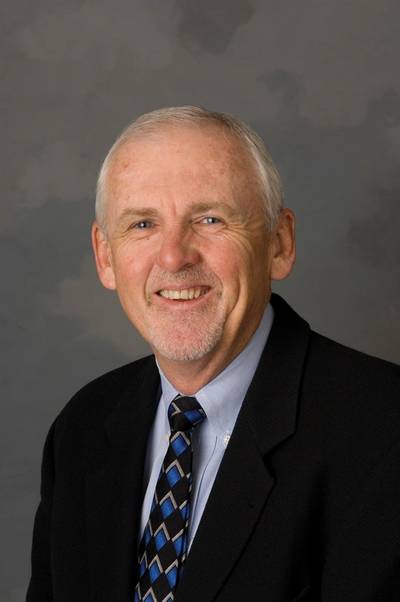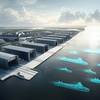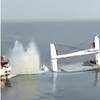Insights: Gary Faber
President and Chief Operating Officer, Foss Maritime
Gary Faber brings more than 30 years of experience in the maritime industry to the position of president and COO of Foss Maritime Company. His extensive experience in marine engineering, vessel operations, salvage and project management in extreme environments extending from the arctic regions of Alaska all the way to the southern extremes of South America frame perfectly the diverse workload of this Seattle-based marine services firm. His notable accomplishments include recognition for the U.S. Coast Guard Benkert Award for Excellence in Environmental Protection and he earned a Bachelor of Science degree in Marine Engineering from the U.S. Merchant Marine Academy at Kings Point and holds a U. S. Coast Guard Third-Assist Engineer License. Faber is perhaps best known to industry, however, as a forward-thinking leader of an environmentally aware team of maritime professionals. In particular, his leadership in way of producing marine equipment that far exceeds minimum environmental standards sets him apart from all but a few of his contemporaries. This month, he weighs in on those efforts, why they are important and what’s coming next.
When you announced in 2007 plans to build the world’s first true hybrid tug boat, you were arguably leaps and bounds ahead of the competition. Despite the cost and an industry that wasn’t ready to pay for “green,” you went ahead anyway. Why?
When Foss built the Carolyn Dorothy we were being true to our corporate culture. To be sure there were doubts internally. But we had willing partners in the ports of Long Beach and Los Angeles; this allowed us to push beyond conventional marine technology and into technologies far more compatible with our environment. We’re taking a long view with the hybrids. After all, there are tens of thousands of harbor tugs around the world – from Singapore to Rotterdam. A global market exists to reduce emissions and move us closer to a zero-trace industry.
In 2009, Foss built the world’s first hybrid tug, and in 2011, converted the first Dolphin class tug to a hybrid. You must have some metrics on their performance by now. What’s the environmental scorecard?
The results were better than originally predicted. The University of California-Riverside’s Center for Environmental Research and Technology did a side-by-side comparison of the Carolyn Dorothy and a conventional Dolphin-class tug over seven months in 2010. The difference between the hybrid and its conventional sister was stunning: a 73 percent reduction in particulate matter, a 51 percent reduction in nitrogen oxide and a 27 percent reduction in carbon dioxide. These numbers helped convince Long Beach and Los Angeles to join us in retrofitting a second Dolphin class tug to hybrid technology.
Green is measured in two different ways. Let’s talk about money for a minute. The hybrid tug, by your own admission, cost 40 percent more to construct. You projected a five-year payback on those extra dollars. How are you doing on that score?
We’re a little closer to seven years now, primarily because fuel costs in the first few years did not rise as fast as we estimated. There are basically two ways we get payback: Reduced fuel consumption and lower maintenance costs. The Carolyn Dorothy uses less fuel: Carbon dioxide is a proxy for fuel consumption. If you look at the UC-Riverside study, there’s a 27 percent reduction in carbon dioxide. That translates into a 27 percent reduction in fuel. As for maintenance costs, there are additional expenses involved in maintaining hybrid components. But because we’re not operating the tug’s engine for as many hours, we dramatically lengthen the time between overhauls. Fewer operating hours equal lower maintenance costs.
Operating your own shipyard obviously creates economy of scale, reduced middle man costs and real convenience to the operator of marine tonnage. You’re not the only one to do it. What’s the advantage to doing so? The downside?
The greatest advantage to running our own shipyards – including facilities in Rainier, OR, on the Columbia River, and in Seattle – is that when business opportunities come along we can move quickly and economically. The latest example is our decision to build three new Arctic-class tugs to serve our oil and gas customers. Work on the first tug starts in the first quarter of 2013 – something Foss might not have been able to do if we’d gone searching for an outside shipyard. Our Rainier facility and its workforce – which is experienced and highly skilled – will be expanding to take on this new work. Significantly, our shipyards grew new lines of business over the past few years. For instance, for the first time Foss is building vessels for outside customers; a pilot boat to transport River and Bar pilots on the Columbia River at Astoria, Oregon, and now a ferry that’s a joint partnership between Washington state and the Colville Nation. Even when the economy was down Foss was innovating.
The concept of going green for the environment or conversely, because it will eventually make you money are frequently given as the top two reasons for doing so. What’s your take on this important mission?
Instead of using the recession as an excuse to relax our emphasis on safety and the environment, we decided to use it as an opportunity to strengthen these important aspects of our business. Over the past few years we set in motion important programs that have our company ready to compete with cutting edge safety and environmental initiatives. Our vision is long-term: By making incremental steps going forward, we can achieve our corporate goal of propelling vessels in ways that have no adverse impact on our waters or in the air. We want to use recyclable supplies in our vessels, shipyards and offices. We’re very serious about this. Environmental stewardship is a core value and it is a primary business driver. Our customers are well aware of our “Zero Trace” goal that pushes Foss beyond simple regulatory compliance. In this way Foss will compete successfully for new businesses in the most extreme, environmentally sensitive environments on earth; places like the Arctic.
“There is a difference between being environmentally aware and environmentally proactive.” When you said this, you also referenced the Foss triple bottom line: People, Profit and Planet. Explain that philosophy for us.
Just to be clear I didn’t coin that phrase. But at Foss we embrace it – every day. We believe sustainability is embodied in that triple bottom line: People, Profit and Planet. This means we constantly look for ways to balance these three crucial things. One way we accomplish this is with our laser-focus on safety. Foss is now achieving record lows in “lost time” incidents on our vessels and in our shipyards. We also believe in protecting the planet by developing new technologies – like the hybrid tug – and environmental processes. We believe those commitments, to people and the planet, will, over time, give our company a decided edge when it comes to winning more sophisticated, environmentally sensitive projects in partnership with customers.
Foss Maritime Company will soon build the first three tugs in an innovative Arctic class of tugs. Arctic and oil & gas opportunities make this a logical move, especially at a time when response/support infrastructure many not be keeping up with increased commerce. What do you see as the primary roles for these units?
With Foss’ emphasis over the past five years on cutting edge safety and environmental programs, we’ve positioned the company to take advantage of opportunities like the Arctic. Things are starting to move. Our customers are keenly aware of the importance of workplace safety and environmental stewardship. When our Arctic-class vessels are completed they will be state-of-the-art, built to meet American Bureau of Shipping (ABS) Ice Class requirements, SBS A1 requirements; and, Safety of Life at Sea (SOLAS) requirements. These units will fulfill a variety of important roles.
A corporate-wide commitment to safety is a hallmark of your firm’s long-term goals. How are you doing on that score and what can you improve?
Until Foss reaches zero injuries, we will not be satisfied. And we are always working to improve. This industry has historically focused on getting the job done and has accepted the notion that injuries are sometimes part of the price of doing business. At Foss we long ago rejected that attitude and have a stated goal of zero injuries. Safety improvements can be attributed to our company’s wide-ranging safety programs, stepped up training and communications, and an “all-hands-on-deck” attitude toward installing a safety culture in every aspect of the job. Even before Foss takes a job we do a job safety analysis to determine the safest ways to get things done and to mitigate hazards. We ask our crews to be actively involved in helping shipmates and yard workers identify critical behaviors that can lead to injuries. We have a “near miss” program which encourages employees who witness events to submit a report to raise awareness and help us find ways to avoid accidents. We ask our employees to submit safety recommendations. We even have a “stretch and flex” program – a strength building routine for sailors that illustrates how they can do exercises in confined spaces that’ll help them avoid injury.
If you had to point to one big thing that will be the next challenge to the domestic or international maritime industry, what would that be?
It is people. Recruitment, training and retention are our number one challenge. This is a deep commitment. Foss – and the maritime industry as a whole – must be prepared to make the investments necessary to attract and sustain the next generation of sailors. The up-front costs of sustaining people as they train are great. But those costs will be paid back many times over the course of their careers. At Foss, we’re making adjustments to allow trainees to learn both on vessels and shore side. We want our sailors to understand how shore-side operations work. Why? This gives them a future path to follow after they gain experience in the fleet, which benefits long-term retention. Recruitment, training and retention are Foss’ future. It must be supported by all – at Foss and industry wide.
(As published in the October 2012 edition of Marine News - www.marinelink.com)













